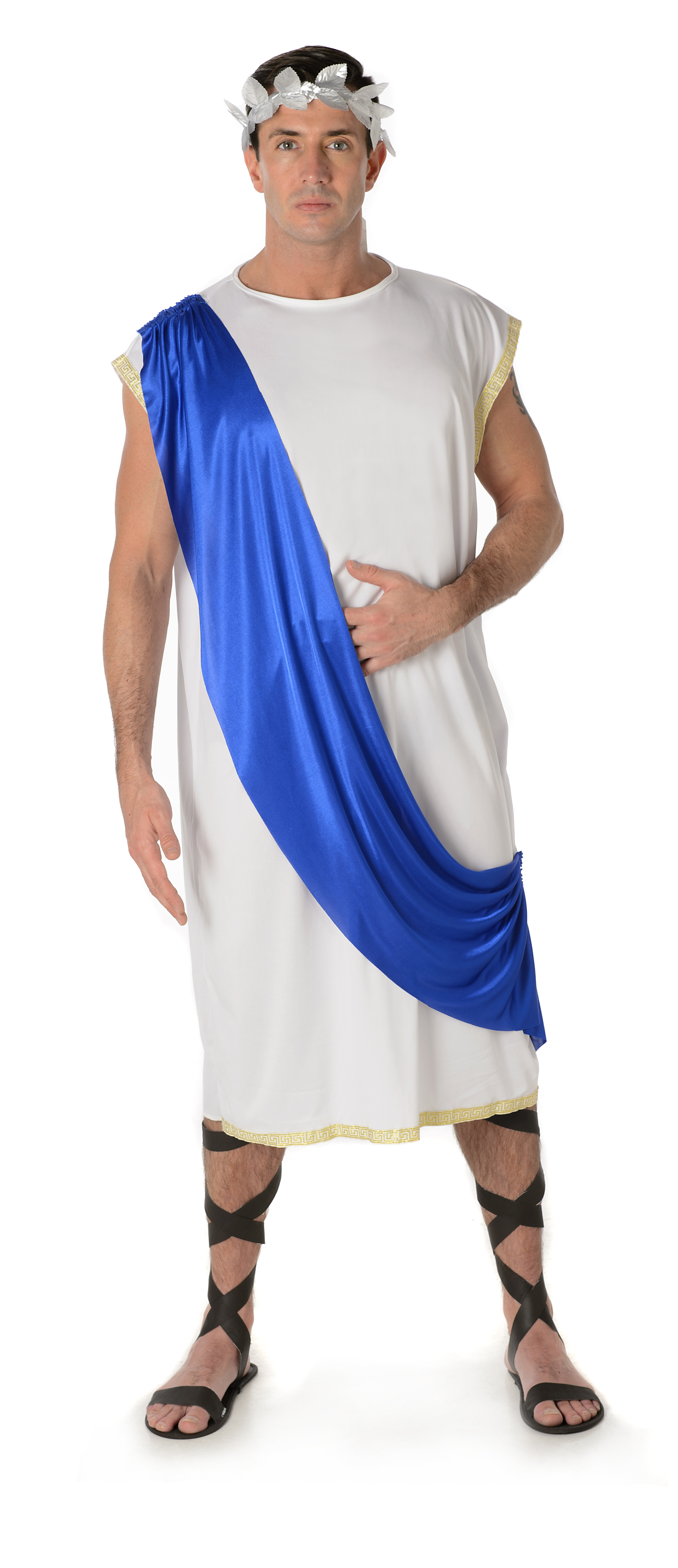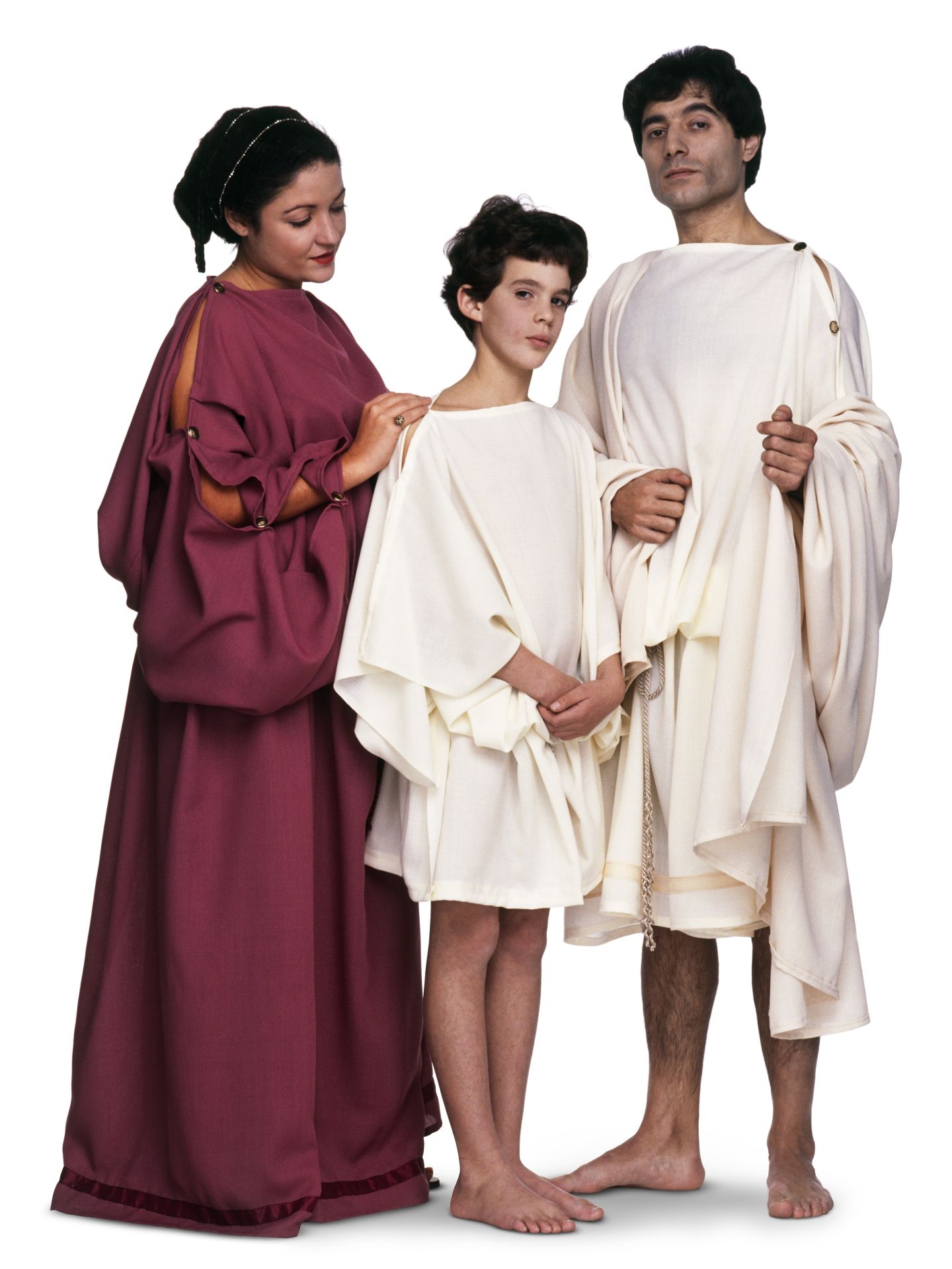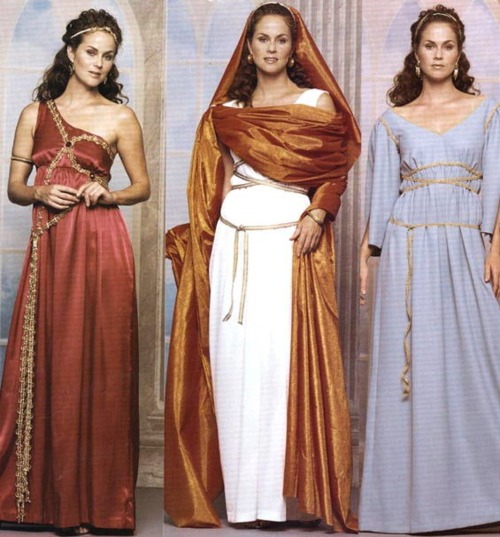
Στο ΦεστιβαλάΚι Greek traditional dress, Greek costume, Traditional outfits
But the ancient Greeks did wear clothing, and there is plenty of evidence of that in the Jaharis Galleries of Greek, Roman, and Byzantine Art. And Greek dress did not consist simply of artistically draped bedsheets: a variety of political, economic, social, and cultural factors determined what people wore, and when they wore it.

Greek fashion, Greek clothing, Roman dress
Clothing in ancient Greece was known for its innovative and stylish design. From the different options for the men and women of ancient Greece, Greek clothing reflected the beliefs and values of society. In this way, ancient Greek clothing was an important part of daily life in ancient Greece and ancient Greek culture. In this article, we.

Greek traditional folk costume "Amalia " Greek Traditional Dress, Traditional Attires
Here is a list of the top 10 famous garments in ancient Greece: 1. Chlamys. This piece of clothing was the ancient Greek version of the modern-day cloak. Made from a seamless, rectangular piece of woolen material about the size of a blanket, it was worn by pinning a fibulae on the right shoulder.

greek traditional costume Tumblr Greek traditional dress, Greek dress, Greek costume
Greek dress refers to the clothing of the Greek people and citizens of Greece from the antiquity to the modern times. Ancient period Clothing in ancient Greece primarily consisted of the chiton, peplos, himation, and chlamys. While no clothes have survived from this period, descriptions exist in contemporary accounts and artistic depictions.

COSTUME Sekai no MINZOKUISHO Zukan Europe Part.2 Greek traditional dress, Ancient
The Amalia dress is a Greek traditional folk costume created by Queen Amalia, who ruled as wife of King Otto from 1837 until their expulsion following an uprising in Athens in 1862. The outfit is the result of an attempt to establish a unifying symbol of Greek identity.

Grecian Toga Mens Fancy Dress Ancient Greece Roman History Adults Costume Outfit eBay
SHEIN offers hot sales on Women Clothing & more to fit your style needs. Shop Online Now. All Our Products Are Specially Crafted with Detail & Style in Mind. Shop Now

IN STOCK Greek Costume Greek Goddess Costume Athens Greece Traditional Costume Cultural Costume
February 15, 2023 Reece Toth Greek clothing culture spans millennia of history. It goes back to the days of the ancients, when heroes like Odysseus and Ajax and Menelaus did war with Troy, right through the Archaic period and Hellenistic Greece, to later times when the Byzantines and the Ottomans ruled the roost in this corner of Europe.

Imperial Ancient Roman Adults Fancy Dress Greek Grecian Toga Tunic Costumes New eBay
The basics of Ancient Greek fashion. Speaking to Greek Reporter recently, Amanda Hallay, a fashion and cultural historian, outlined the basics of ancient Greek clothing styles. According to Hallay, there were three basic styles of clothing that most people wore in the ancient world. A diagram of the standard chiton worn by a woman.

Ancient Greek Clothing in Sixth Scale
dress Table of Contents Home Visual Arts Fashion & Personal Adornment Ancient Greece youth wearing a Phrygian cap Youth wearing a Phrygian cap, marble, Roman copy of a Greek original, 4th century bce; in the Fitzwilliam Museum, Cambridge, Eng. (more) Ancient Greek civilization is customarily classified into three segments.

Η παραδοσιακή ενδυμασία της Αράχωβας The traditional women's Greek folk costume from the town
Antique Greek Ottoman Traditional Vest Jacket Cepken - Gold Embroidery Wire on Velvet 19th c. - Embroidery Costume from Greece. (529) AU$883.75. AU$1,104.69 (20% off) FREE delivery. Traditional Greek Evzone Kid's Costume. Vintage Tsolias Clothing from Greece. Handmade Εmbroidered Vest, Fustanella and Shirt. (616)
Greek dress Wikipedia
Clothing in ancient Greece Charioteer of Delphi wearing a chiton. Clothing in ancient Greece refers to clothing starting from the Aegean bronze age (3000 BCE) to the Hellenistic period (31 BCE). [1] Clothing in ancient Greece included a wide variety of styles but primarily consisted of the chiton, peplos, himation, and chlamys. [2]

Ancient Greek Clothing Ancient Greek Tunic DK Find Out
Greek clothing. As the Mycenaean culture began to suffer from famines and other environmental catastrophes around 1200 b.c.e., another culture began to flourish. The Dorians, ancient Greeks, became dominant and conquered the struggling Mycenaeans. Although no evidence about what Greeks wore has been discovered for life between the twelfth and.

MA REFLECTIVE JOURNAL Representations of Ancient Greek Clothes for the Judge
Clothing in Ancient Greece consisted of lengths of rectangular linen or wool fabric. The Greeks wore light clothes as the climate was hot for most of the year. Their garment usually consisted of two main parts: a tunic (either a peplos or chiton) and a cloak (himation). Clothes were secured with ornamental clasps or pins at the shoulder and.

Pin on Greek Traditional costumes and Jewelry
In antiquity, clothing was usually homemade and the same piece of homespun fabric could serve as a garment, shroud, or blanket. Greek vase painting and traces of paint on ancient sculptures indicate that fabrics were brightly colored and generally decorated with elaborate designs. Clothing for both women and men consisted of two main garments—a tunic (either a peplos or chiton) and a cloak.

Traditional costumes Karpathos Greece Greek traditional dress, Costumes around the world
The chiton, a versatile tunic worn by both men and women, was a staple of the Greek wardrobe. For men, it typically fell to the knees, while women's chitons reached their ankles. This garment was created by draping a rectangular piece of cloth around the body and fastening it at the shoulders with pins or brooches, then belting it at the waist.

Now Greek Clothing Is The New Fashion and New style Unique Fashion and Trends
Historic Greek clothing curated by the Hellenic Lyceum Sydney. Credit: Hellenic Museum Sydney. Vertzayias says "as our community began to integrate into Australian society, the Lyceum devoted more time in building up its collection of costumes, teaching folkloric dancing and promoting Greek culture.